March 2018 – Volume 20, Issue 2
In This Issue
Flanigan’s Eco-Logic
Quote of the Week
Community Choice Aggregation in Los Angeles
Best Practices at the Greenest Airports
New Super-Volcanic Source of Lithium
MicroTransit and Uber’s New “Bus” Service
Tandem Solar
FERC and Storage’s Bonanza
Wind Works from Korea to the Atlantic
Congestion Pricing and Flying Taxis
Residential PACE Results
Greening of California Podcast Available
EcoMotion Welcomes New Interns

Flanigan‘s Eco-Logic: We’re Saving the World
Do you have a regrettable moments file? I do! It’s virtual and fortunately not too many bytes large.
I’ve regretted stating in the last edition of EcoNet News that Tesla is not saving the world. Wrong. That’s not constructive nor reflective of my truer sentiments. EcoMotion is about the power of the increment. So many of us are saving the world, one step at a time. Elon Musk takes giant steps for us all. His contributions have been and continue to be huge and jaw-dropping. Sure, Teslas are expensive and arguably elitist, but Musk is a beacon of light paving the way for our sustainable future. One of his most creative tactics was recently sending his red roadster into space. Love it and Elon’s blend of tech savvy, marketing brilliance, and play!
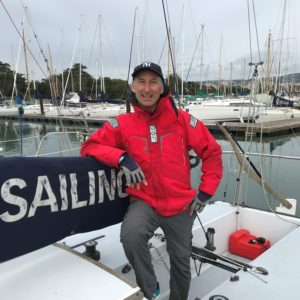
Lucky I am to have many friends and colleagues that are dedicated to saving the earth, and that are models for us all. Balance is key in their lives. Peter Rumsey is an extraordinary engineer, and an extraordinary friend. He’s the founder of Point Energy Innovations, a company that recently tried to promote chairs with built-in heating and cooling… spot conditioning. But back to balance on a sunny Sunday in the Bay Area. Peter is not a seasoned sailor, but it’s his new passion. He envisions renting sailboats around the world, even an Atlantic crossing. So, he’s enrolled in the OCSC Sailing School in Berkeley. And he needed crew. That’s me.
Strict are his instructors; I witness the required checklist before my skipper is able to take out one of the schools J24’s. Like flight school, Peter’s getting hours. By day he’s a leading building engineer. He’s the Net Zero Integrator at San Francisco Airport and he teaches at Stanford. We’re happy to have hours of “windshield time” alone together, catching up on everything from sustainable refrigerants to our kids and sustainable happiness. We dig the time together cruising out to Alcatraz, then around Angel Island.
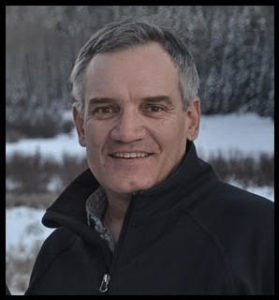
A week later I pick up my bud and former Rocky Mountain Institute employee David Houghton at the Van Nuys airport. He’s down from San Luis Obispo to work on a solar job we’re doing. It’s less than an hour in his plane. The skies looked ominous to me but Dave casually throws his mandolin and overnight bag in the back of the Bolt, and we’re off to Glendale. So how was the flight I asked?
Dave casually recounts his call to the flight tower seeking permission to drop altitude as his wings were icing up. “That can bring down a plane,” Dave mentions nonchalantly. But permission was granted and he adjusted accordingly, going through clouds and relying on his plane’s instruments. He loves to vacation with his family and plane… and aspires to fly commercially. An extraordinary engineer… deep in his field, confident and driven, thriving with his family in San Luis Obispo, and teaching at CalPoly Pomona. He’s got balance.
This week’s lead article is about the Los Angeles Clean Choice Energy delivering power for the first time on February 1st. A big milestone is achieved. This doesn’t happen without considerable effort, and I was pleased to meet with Gary Gero that very morning. He’s a friend who’s worked hard and deserves recognition.
Quote of the Week
“Airbus believes that its Flying Taxis will revolutionize urban travel for millions of people.
Christine Amour-Levarfor, for Forbes
Community Choice Aggregation in Los Angeles
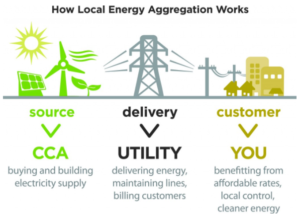
http://www.leanenergyus.org/what-is-cca/
On Thursday, February 1st, Los Angeles Clean Choice Energy (LACCE) first began to deliver power in its first phase of operations. LACCE was now serving county buildings in the Southern California Edison service territory. But now let’s be more accurate, LACCE has a new name, the Clean Power Alliance of Southern California.
Chief Sustainability Officer for LA County, Gary Gero, by all accounts took the community choice aggregation (CCA) concept and promise of what LACCE offered “to the finish line”. I met with Gary in his office that morning. He had reason to smile, stretch and relax a bit, as a big milestone was reached. He’s signed up cities, representing 2.4 million customers, to the CCA. That’s an accomplishment.
Community choice aggregation is a mega-trend in the electric utility world, allowing communities like Los Angeles County to buy their own power for their residents and businesses. In California, CCAs were enabled by Assembly Bill 117 in 2002. The goal for a CCA is to deliver greener power, sooner and cheaper.
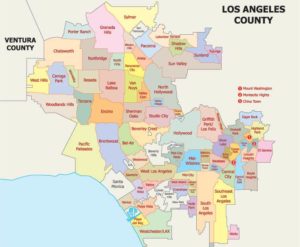
So, what happened the other day in LA? What happened in this first phase of delivery? Gary Gero reported that 60% of the power being delivered is renewable as defined by the California Public Utilities Commission, 25% is big hydro, and the rest normal system power. Thus, 85% is green power and is being delivered at a cost 2% below the Southern California Edison generation rate.
Gary Gero took the CCA concept to over 100 city council and commission meetings throughout the County. He is literally and figuratively a long-distance runner of note. Now he passes the baton to Ted Bardacke, the newly appointed Executive Director of the Clean Power Alliance (CPA). The CPA is a joint venture of more than 25 Southern California communities that extends beyond Los Angeles County to Ojai in Ventura County. The CPA is off to a great start, and expects to trim GHGs in the region by 9% through the its clean power purchases.
The CPA’s success in signing up interested cities – now nearly 50% of all of the county’s 88 cities have expressed interest – has triggered action by Southern California Edison. SCE has sought permission to educate customers in cities that are interested in community choice aggregation, a campaign likely intended to dissuade consumers from jumping ship. There is also a struggle over the Power Charge Indifference Adjustment (PCIA) and what its price ought to be.
The PCIA is a rate recovery mechanism to charge a new CCA for the stranded assets that it creates, in this case power purchases secured by Edison on behalf of its customer, and its regulated obligation to serve everyone in its territory. A high PCIA would shrink and potentially eliminate the price benefit of a CCA.
For a good read on CCAs, check out EcoMotion Intern, Ellen Lee’s white paper that presents its genesis and coast-to-coast successes: https://ecomotion.us/white-paper-on-community-choice-aggregation-the-opportunity-and-its-status-nationally/
Best Practices at the Greenest Airports
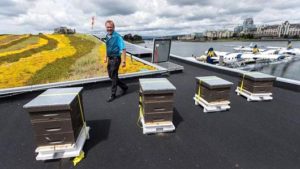
Source_ Harbour Air
Did you know that Chicago’s O’Hare Airport has an apiary? It is home to a million bees! Denver International’s 10 MW solar farm is complemented with the airport’s own composting facility. The largest green wall in North America is at Vancouver International. Not surprisingly, the Galapagos Islands’ airport is net zero, using solar and wind to power its operations. It also desalinates sea water to provide potable water for the airport.
There are lots of distinctions and accolades in this dynamic field! SFO has implemented more than 49 different energy efficiency measures. There’s rainwater harvesting at the Indira Gandhi Airport in Delhi, plus daylight harvesting, and onsite solar and sewage treatment plants.

Planned Mexico City’s Sustainable Airport
Mexico City’s planned airport will be the most sustainably built. Its design lacks a conventional roof, traded it in for a continuous lightweight grid shell in a single flowing form. The entire building will be serviced from beneath, collect rainwater and provide incredible views of planes circling above, featuring a radical new form of structure that is open to the skies above.
San Diego International touts the world’s first LEED Platinum airport terminal, while LAX boasts the world’s largest LEED certified terminal. Long Beach Airport is proud of its unique and purposeful lack of passenger jetways. They use lots of air conditioning and deprive those arriving in sunny Long Beach of the outdoor experience. Many airports have converted their runway lighting to LED; most airports have addressed the long-hanging fruit of efficiency gains in their terminals, energy-intensive facilities. Getting passengers to and from the airports has long been a focus of airport efficiency.
But the greenest of them all… according to one study, is Oslo’s Airport. In addition to a terminal built with locally sourced stone and timbers from sustainably managed forests, the airport features a snow capture system that, like an ice house of yesteryear, provides summertime cooling!
Finally, airport facilities use only 5% of the energy used by the planes themselves. That’s according to the Airports Council International (ACI). According to the Intergovernmental Panel on Climate Change (IPCC), aviation emissions – from fuel used on planes – account for 2% of global GHG emissions.
New Super-Volcanic Source of Lithium
Lithium is a soft, silvery white metal. Thanks to its single-valence electron, the element is well prepared for cation formation. This quality makes lithium highly valuable for batteries.
There is an increasing need for lithium given the rise of electric cars and buses plus stationary storage. Smithsonian Magazine projects a global demand of 12 – 20 million metric tons annually. Lithium is plentiful. It is the 25th most abundant element on earth. There is an estimated 230 billion tons of lithium in seawater, but at very low concentrations. Accessing it and extracting it is challenging and will be more so as demand for lithium increases.

Today, most lithium comes from mineral deposits and from brine salty groundwater. Now, Stanford geologists claim to have found another source of lithium linked to super-volcanoes. (Super-volcanoes are defined as volcanoes that spread deposits more than 1,000 cubic kilometers.) In the calderas of these super-volcanoes, scientists have found high concentrations of lithium in a type of volcanic clay called hectorite. This layered, white ashy substance is formed following a volcanic eruption.
The U.S. Geological Survey reports that Chile has the largest mineral deposits of lithium by far, 7.5 million tons, and the highest annual production, 8,800 tons. Bolivia, has 5.4 million tons of known reserves. China and Australia follow in terms of known reserves.
MicroTransit and Uber’s New “Bus” Service
 The Los Angeles Metropolitan Transportation Authority’s Office of Extraordinary Innovation is requesting that the private sector partner with Metro to offer microtransit options for riders. Unlike a standard bus service, Metro’s MicroTransit Pilot Project is an alternative to fixed-route system. Metro studied similar projects in Kansas City, Santa Clara, and Alameda.
The Los Angeles Metropolitan Transportation Authority’s Office of Extraordinary Innovation is requesting that the private sector partner with Metro to offer microtransit options for riders. Unlike a standard bus service, Metro’s MicroTransit Pilot Project is an alternative to fixed-route system. Metro studied similar projects in Kansas City, Santa Clara, and Alameda.
Metro has requested that providers offer a service of on-demand shuttles that will follow turn-by-turn instructions from a navigation system that uses live traffic conditions and real-time requests from passengers for pick-up and drop-offs. The goal is to generate the most efficiently possible shared trips for Metro customers.
Some say that “microtransit” is a movement, even a fad. Worse, some criticize the concept as an “elite projection” of something that will be good for society as a whole. Just as urban elites’ lives have been transformed by ride-hailing services, they want to believe the transformation can similarly be brought to transit.
Some question the role of an agency in a disrupted market: “Does Metro really think it can out-Lyft Lyft, or out-Uber Uber?” Metro responds that, “There’s a place for private mobility services to operate alongside publicly provided services.”
Metro staff envision that the microtransit service in Los Angeles will be used for short trips, generally 20 minutes in duration in determined service zones. The provider will use vehicles that are smaller than traditional transit vehicles. Microtransit will be on call when riders want it, “connecting more people and places to the Metro system.”
Now, Uber is launching something that looks like it! Metro has said it’s not quite what it had mind, but close! The new Uber Express Pool service is cheaper than Uber Pool and directs passengers to pick-up spots to avoid backtracking. It may also drop passengers a few blocks from their destinations to build more efficient routes. Uber, the ride-hailing company that radically disrupted the taxi industry, now is providing an alternative to buses as we know them. This is a lower cost service for passengers willing to share rides with strangers and to begin and end their journeys at specified locations.
“Microtransit is in its embryonic stage,” according to transit planners Fehr and Peers. Some say that this is the cusp of this “middle-tier movement”. MicroTransit may help cities fill the infamous, and inconvenient, “last-mile” transportation gap.
Tandem Solar
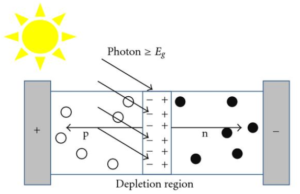
Basic p-n junction solar cell and charge transport phenomena (1)
Currently, the best lab examples of traditional crystalline silicon solar cells have efficiencies of 20 – 25%. Lab examples of multi-junction cells, or what others call tandem solar, have demonstrated performance of 46% under concentrated sunlight. There are commercially available tandem solar cells that achieve efficiencies of 30%… ~50% greater than traditional cells.
Each layer of a solar cell comprises a p-n junction, made of different semi-conductor materials. This is where photons flip into electrons. Each material’s p-n junction will perform differently in terms of using different wavelengths of light. By stacking different materials, typically three layers, multi-junction cells are developed. Tandem fabrication techniques have been used and are available.
By combining several junctions in one cell, the effective absorption window will cover a larger part of the solar spectrum. Different forms of polymers are being tested, launching “plasticphotovoltaics”. The tandem solar cell stack can have impressive efficiency, but at a steep price. So far, their higher price-to-performance ratio has limited their applicability to unique circumstances, like aerospace, where higher power to weight ratio is critical.
Now Iris Solar and NREL are working to modernize rooftop solar production with tandem solar. Here’s how it works… Iris-style. Add a crystalline metal-halide perovskite layer to coat standard silicon panels. Achieve production of additional electricity from infrared light not previously captured. Iris aims for 30% in the short-term, 35% in the mid- term.
One of Iris Solar’s technical challenges is that the second layer, thus far, requires spin-coating in the manufacturing process. Using centrifugal forces, thin layers of solvents and coating materials are deposited on a substrate. This technique limits size of panels. Now, Iris Solar is working with NREL to test ink-jet printing which could be more precise than spin-coaters and able to print perovskite films on 6*6 area. This work is supported by U.S. DOE Small Business Vouchers program.
1. Prospects of Nanostructure-Based Solar Cells for Manufacturing Future Generations of Photovoltaic Modules – Scientific Figure on ResearchGate. Available from: https://www.researchgate.net/
FERC and Storage’s Bonanaza!
Energy storage is getting what is proponents claim is the biggest boost in years thanks to a new federal ruling (Order 841) issued February 15th by the Federal Energy Regulatory Commission (FERC). The ruling grants storage more access to competitive wholesale electricity markets. It is intended to eliminate barriers for storage in wholesale capacity, energy, and ancillary services markets. The FERC is continuing to develop rules that level the playing field for traditional generators and distributed, grid-edge technologies.
FERC has now required regional transmission organizations (RTOs) and Independent System Operators (ISOs) to revise their tariffs and to create models that will allow energy storage into the market. For instance, it clarifies that the distinctions between nameplate capacity and the operating ranges that the systems must work within for this nameplate capacity to be viable.
To industry officials, the FERC ruling is a game changer. It creates more economic options for storage and allows microgrids to pencil out better by pulling in revenues from different streams. The FERC ruling opens the market for much more storage to come on line. Experts believe this ruling will allow storage to grow from 0.5 GW in 2017 to 35 GW in 2025.
Wind Works from Korea to the Atlantic
 Did you know that the Winter Olympics in PyeongChang, South Korea were entirely powered by the wind? PyeongChang is located in the Taebaek Mountains, notorious for cold, harsh winds, that roar southeast from continental Asia. The region is known for the testy wind that made the downhill and giant slalom events a bit dicey. That wind provided a sustainable source for the games’ power.
Did you know that the Winter Olympics in PyeongChang, South Korea were entirely powered by the wind? PyeongChang is located in the Taebaek Mountains, notorious for cold, harsh winds, that roar southeast from continental Asia. The region is known for the testy wind that made the downhill and giant slalom events a bit dicey. That wind provided a sustainable source for the games’ power.
The Olympic organizing committee boasted that the games were entirely powered by the wind. On a ridge-top clearly visible from the games, and as part of the Central Korea Renewable Energy Development Plan, a 203 MW “wind energy cluster project” leaves an Olympic legacy.
South Korea has aggressive goals for renewables, calling for renewables to supply 20% of the nation’s requirement by 2030. In December, the South Korean Energy Ministry called for an additional 16.5 GW of wind development. In 2017, South Korea’s first offshore project — the Tamra Offshore Wind project — came on line located off the coast of Jegu Island.
Back stateside, the installation of U.S. wind generating capacity has been increasing in strong form and is expected to eclipse hydro in 2018. And as its proponents might say, “stay tuned for massive offshore wind production!”
Congestion Pricing and Flying Taxis

City Airbus Urban Air Mobility
London, Singapore, and Stockholm are each prime examples of congestion pricing, a system to limit cars in downtown areas, especially at peak periods. So how about New York? How about Los Angeles? Are there enough alternatives to driving to give people a way to avoid steep tolls?
Singapore’s congestion pricing program (formally known as the Electronic Road Pricing System) began in the 1970s. It imposes varying fees based on road and time of day using on-board “gantries” that activate on-board transponders within Stockholm’s 13-square mile congestion zone. In Stockholm, the number of cars dropped in year one by 22%, from 450,000 to 350,000 vehicles.
Congestion pricing began in London in 2003. The City charges a flat fee of $16 a day to drive into the 8-square mile congestion pricing zone. And it proved effective in reducing traffic. Within a year, number of vehicles entering the zone dropped by 18%. Traffic delays were reduced by 30%, all resulting in decreased vehicle emissions. London recently added a “toxicity charge” to limit older, more polluting vehicles from entering the zone. Unfortunately, gridlock is back in London in large part due to a 30,000-car increase in ride-hailing services.
New York City is considering creating a congestion zone from 60th street south to the Battery, and plans to charge $11.52 for cars, $25.34 for trucks, and $2 – 5 per ride for ride-hailing services. The cost of setting up a system is significant: $214 million in London, $237 million in Stockholm for gantries and cameras. Singapore spent $110 million and requires each vehicle to have a transponder. And then there are revenues: $230 million a year in London, $155 million in Stockholm, and $100 million in Singapore. New York’s system could generate a billion dollars.
The Garden City of Singapore, despite its preeminent congestion pricing, is still mired in traffic. The nation has dubious distinctions: it has 4.8 kilometers of road per square km of land – the highest in the world, as well as the highest ratio of vehicles per kilometer of road (232). That dusts Japan at 63 vehicles/km road, and the U.S. as a whole (37). Given its congestion, it was suitable that in early February, at an air show in Singapore, that Airbus unveiled its Urban Aerial Mobility (UAM) technology… commonly known as the flying taxi concept. Also known as the City Airbus, its first test flight is scheduled for late 2018. It boasts a maximum speed of 80 mph, carries up to four passengers, is self-piloted, battery-powered, and features vertical take-off and landings.
Airbus is not alone: Uber signed a deal with NASA to help develop flying cars. Uber’s new CEO predicts that Uber Air will be operable in the next five to ten years. And Dubai recently witnessed the maiden voyage of a two-seated, 18-rotor taxi prototype built by German Volocopter.
Residential PACE Results
PACE stands for Property Assessed Clean Energy, a means of adding an assessment to one’s property taxes for energy efficiency and renewable energy installations. Cities can create or join PACE programs that give homeowners access to capital to retrofit and upgrade their homes. A major concern was delinquency rates: Would residential PACE assessments experience high delinquency rates?
New analysis reflecting four years of data shows that residential PACE delinquency rates are lower than the property tax delinquency rates of comparable homeowners. The credit rating agency DBRS conducted the first comprehensive analysis of R-PACE delinquency rates using four years of data. David Gabrielson, Executive Director of PACEnation, states that PACE is a great option for homeowners to invest in energy efficiency. Over 180,000 homeowners already have. PACE liens’ delinquency rates are consistently lower than delinquencies of property taxes. The study measured residential property tax delinquency rates in the 1.9% – 2.3% range versus 1.4% – 1.9% for PACE assessments.
Greening of California Podcast Available

Ted Flanigan interviews Michael Peevey and Diane Wittenberg about their new book, California Goes Green: A Roadmap to Climate Leadership. In this book, they show how California built a gold standard environment along with a thriving economy. It’s an inspiring and highly informative read.
To listen, click here: https://ecomotion.us/podcast/a-conversation-with-michael-peevey-and-diane-wittenberg/
EcoMotion Welcomes New Interns
EcoMotion is excited to announce our new interns, Stefano Fantuzzi and Sasha Srivastava.

Stefano brings his extensive engineering experience and dedication to sustainability to his work. Originally from Treviso, Italy, Stefano’s work has included mechanical design calculation for heating and ventilation, as well as conducting energy audits to assess energy consumption. He has a BA in Energy Engineering from the Universita Degli Studi Di Padova. Currently, he is working on his Sustainability Certificate Program at UCLA Extension.
When asked what he hopes to gain from his internship he said: “With the internship I am looking forward to work in an office environment where I’ll have the opportunity to learn how other professionals operate and take on those aspects and make them part of myself, whether it’s communication, behavior, or technical advices.” In return, Stefano brings great intrigue and enthusiasm to our office. He’s clearly on a mission, “I look forward to hands on practical projects and seeing how the different culture and approach can develop my skills.”

Sasha is remotely pursuing a Masters of Science in Energy Policy and Climate with Johns Hopkins University. She brings her strong background in finance and passion for sustainability to her work at EcoMotion. When asked about what excited her the most about working with EcoMotion, she said: “I am looking forward to working with the team the most. Everyone seems to have their own areas of expertise as well as a wide range of experiences. I value having the opportunity to learn from such a knowledgeable and friendly group!”
According to Ted Flanigan, “Sasha already had brought great value to EcoMotion. Her energy is contagious and she’s eager to dig in and help with team projects. We salute young professionals making career shifts, especially those to better the state of the planet.”

